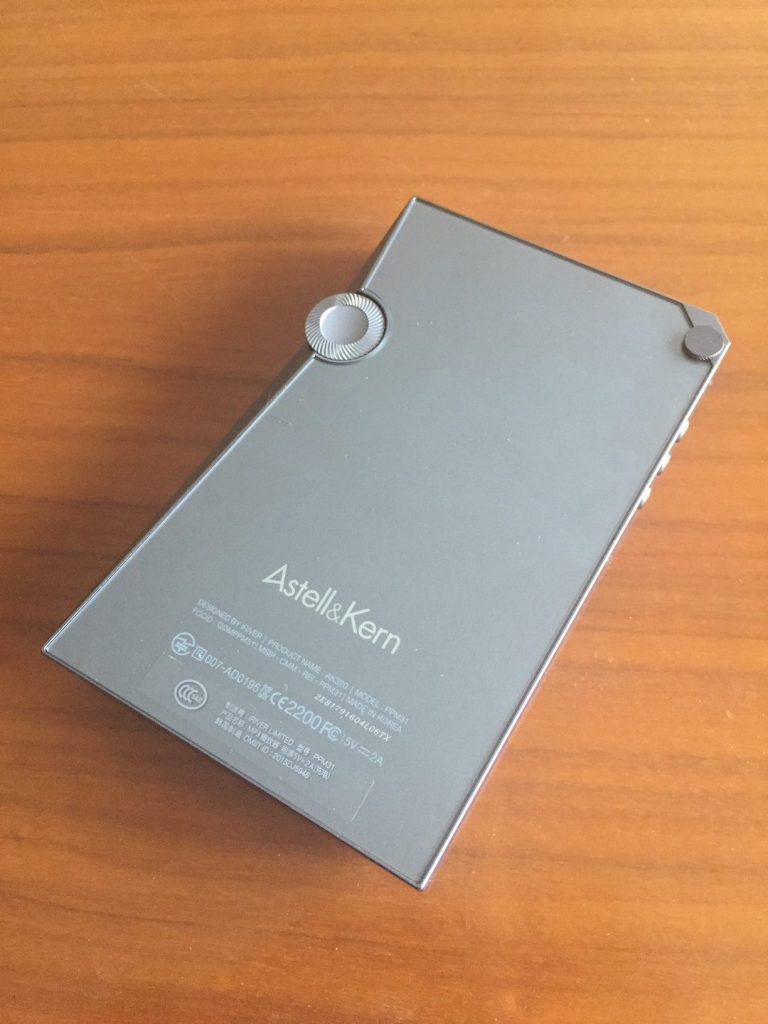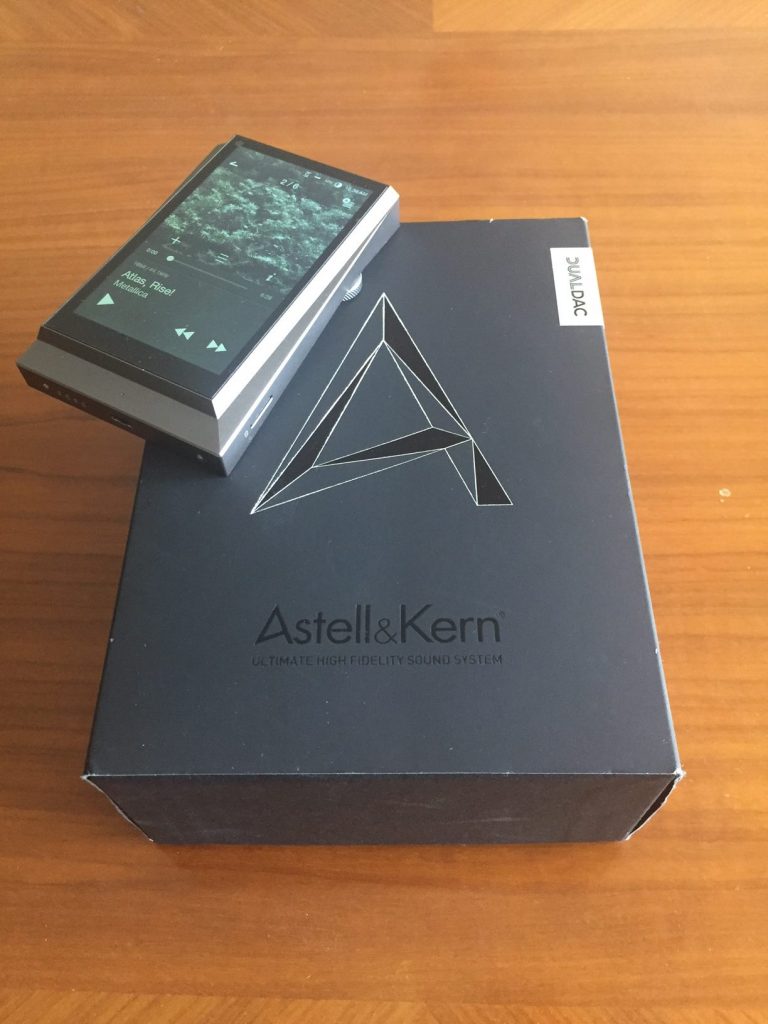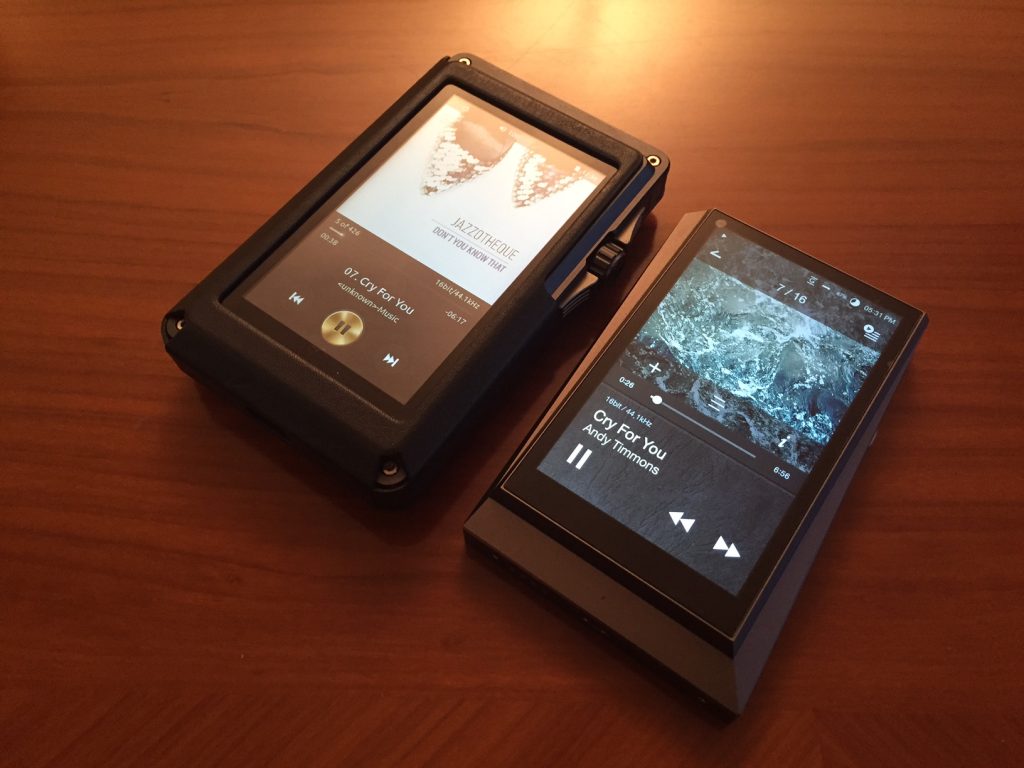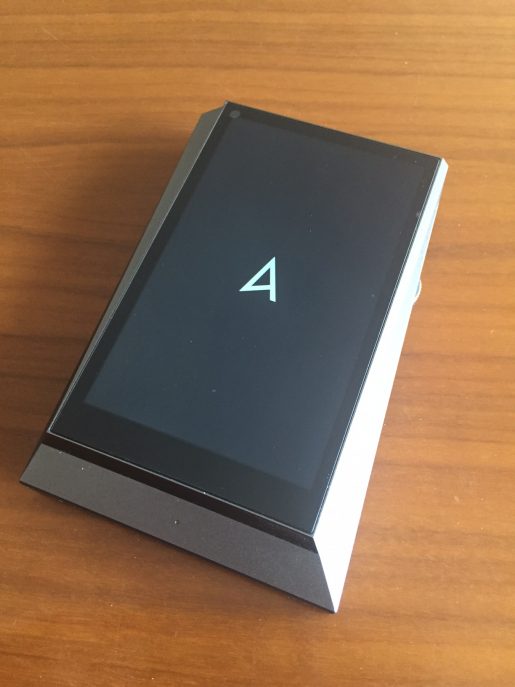Astell&Kern, aka iRiver, is a Korean hi-end digital audio player manufacturer. Since the beginning of their history, they have been producing high quality units and continuously working hard on research and development. As a consequence of their determination, they have created many beautiful players over the last five years.
Currently, the AK380 is displayed as the flagship of the A&K line and is priced at $3500. On the other hand, they offer many other options considering the budget and usage. For example, the AK70 is one of the smallest and cheapest players in the product range at the moment. In my opinion, the AK70 can be considered as a very good player that has a combination of portability, sound quality, and streaming ability via Tidal.
The AK320 is the little brother of the flagship AK380. It provides a similar look to its brother and is priced at $1799. Basically, AK320 is a digital audio player, but at the same time it can be used as a portable USB-DAC.
Design, Built Quality, and Firmware:
Considering its aluminum body, AK320 seems to have a similar chic and cool shape to the flagship AK380 with the exception of the volume pot location and some minor differences. While AK380 maintains a volume pot that is placed on the right side of the player and offers a cover against damages, the volume pot of the AK320 is placed on the backside with a horizontal control. It should be taken into consideration that the volume pot doesn’t seem as strong as the one on the AK380.
The AK320 provides a 128 GB of internal memory as well as a memory card slot on the bottom side of the body, which supports cards up to 256 GB according to the manufacturer website. Theoretically, the player can have up to 384 GB of total memory.

On the left side, there is a console including three buttons to control playback; their quality and sensitivity is as impressive as the general built quality of AK320. So far, Astell&Kern has reached a serious performance level that is beyond the industry standard in terms of built quality and software stability, with the exception of some minor bugs.
The AK320 has a WVGA type touch screen with a very satisfying resolution for a digital audio player. Unlike most players in the industry, the sensitivity and responsiveness of the touch screen is simply excellent; the AK320 is one of the best players that I have tested to date in terms of the screen performance.
Under the hood, AK320 utilizes two AKM AK4490 converters developed by Asahi Kasei Microdevices Corporation. Unfortunately, AK320 doesn’t offer a native DSD playback; it uses a PCM algorithm to play DSD files. The firmware is quite easy to use and works fast enough. It is no challenge to find and play/pause a song. In addition, as a new feature included with the last update, AK320 allows us to stream music via Tidal, a very popular application among audiophiles.
The player doesn’t have an ideal output to drive some power hungry full-size cans. I would definitely recommend A&K’s portable amp to those who want to get a very powerful output from the AK320. Still, it offers enough power for my Norwegian M-Fidelity SA-43, and that is the most difficult IEM to drive in my inventory.
Lastly, the AK320 offers Wifi and Bluetooth connections as well as an interesting parametric EQ for EQ’ing fans.
Sound:
Low Frequency:
AK320 doesn’t have a dominant low frequency presentation; still it provides enough body. Sub-bass notes have a medium-sized diameter and its texturing and pace performances are good for its price. By using coloration, it creates a nice depth feel in the sub-bass region.
The mid-bass presentation is neither forward, nor recessed and its resolution is above the average level of the industry. On the other hand, there is a control problem starting from the point where the mid-bass and sub-bass presentations are connected. Still, the mid-bass tonality relatively eliminates a possible disturbance created by the possible aggressiveness of the midrange and the sharpness of the treble presentation.
Mid Frequency:
In general, the midrange presentation offers a slightly open tone and it is located slightly forward in accordance with the stage structure. That slight forwardness makes for an intimate sound, but the average note thickness leans towards the thin side. Pursuant to the stage structure and the location of the midrange notes, the resolution and detail levels seem to be quite high.
The general tonality of the midrange presentation can be considered in the natural class, but it is not super smooth and the note releasing has a bit stress. Needless to say, that tonality approach is used to create a high level of resolution and a nice transparency.

High Frequency:
The high frequency presentation is neither very prominent nor laid-back. Although notes are tuned as slightly sharp and thin, it offers a very good performance in terms of the extension and the resolution. In addition, it performs impressive in fast metal tracks and offers a high detail level.
The sharpness of the treble presentation wouldn’t be a problem with IEMs that already have non-fatiguing and smooth treble notes. On the other hand, bright and lean sounding IEMs may not provide enough body and smoothness in the treble region when pairing with AK320.
Soundstage and Separation:
AK320 doesn’t have a very wide stage, but it maintains a depth performance that is above the industry average level. Even if it releases some uncontrolled midrange notes that may come too forward in some passages, it has strong separation for its price. In addition, the background is clean and black enough to increase the precision of the presentation.
Balanced Output:
AK320’s balanced output offers a more airy and spacious stage. The stage becomes slightly laid-back and the player creates a deeper presentation. The overall presentation gets more effortless and it releases smoother and less sharp notes in the treble region. The single ended output sounds more full-bodied, while the balanced one maintains a better separation and layering.
A Korean Comparison:
Astell&Kern A320 vs Opus#2

The Opus#2 provides a more prominent low frequency presentation as well as better-textured notes in the sub-bass region, while the AK320’s are a bit dry in comparison. The Opus#2 has a more emotional sub-bass tone and it creates a better depth in accordance with the texture superiority.
The Opus#2 releases a more prominent mid-bass presentation; at the same time it provides a better mid-bass control. Even if the Opus#2 betters the AK320 in terms of the general density of instruments, the AK320 still brings enough body to the general spectrum and would sound good with IEMs that release weighty notes.
Both players maintain an open tonality and intimacy in the midrange presentation, but the AK320 has a more forward stage structure with a more open tone, more cleanliness, and thinner notes. The transparency level is similar, but the AK320 offers better resolution, while the Opus#2 releases more effortless, natural, and thicker notes. Pursuant to the slight openness difference in the tone, the Opus#2 has a less stressed upper midrange presentation as well as smoother vocals.
The AK320 offers a slightly more prominent treble presentation and the notes are slightly colored and more open toned in comparison. The resolution level is similar, but the Opus#2 maintains a more natural and weightier high frequency presentation, while the AK320 articulates details more. In addition, both perform quite well in fast metal tracks.
The Opus#2 has a slightly deeper and wider stage; it creates longer distances between instruments, while the AK320 uses a smaller stage in comparison. Although the difference in the stage width is not significant, the Opus#2 has a depth advantage over AK320 and it locates instruments in a more breathable and spacious area. Both offer a background that has a nice cleanliness and blackness, but Opus#2 provides a better separation in accordance with a clearer background and the depth advantage.
Note: There is no doubt that the AK320 has a significant superiority over the Opus#2 when it comes to the screen and firmware performances as well as streaming opportunity.
Final Words:
AK320 is a fine player that offers an impressive resolution in the midrange and a good speed in the high frequency presentation. There is no doubt that AK320 provides an excellent user experience when it comes to the firmware, the usability, and the screen performance. Lastly, it is possible to use AK320 with some expandable options such as AK external amp, AK cradle, and AK CD ripper. This is a technologically stellar player!
Please click here to get more information about AK320.
Please click here to purchase AK320.
Special Note: I would like to thank Astell&Kern Turkey and Ozgur Kavuncu for providing a review unit.















Want to join discussion?
Feel free to contribute!